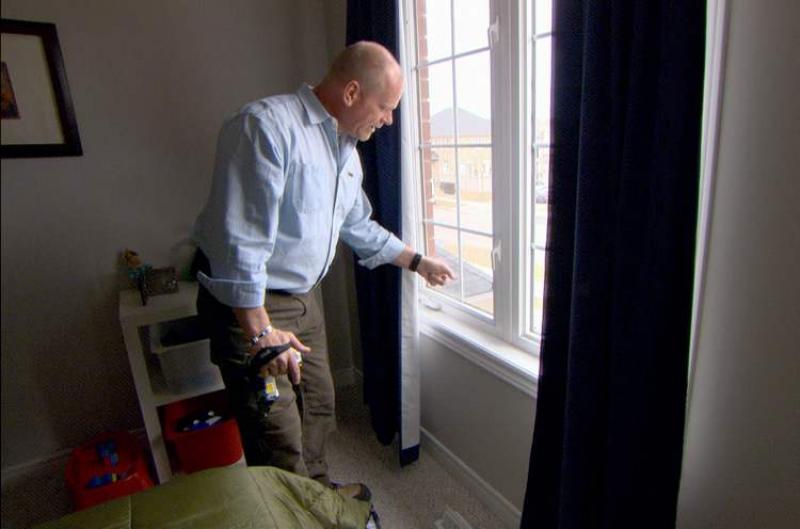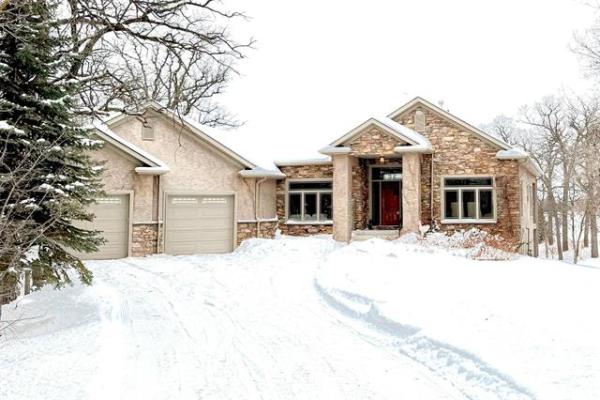I get a lot of emails every week. A lot. And what always interests me is seeing what everyone's talking about. What are the important issues for homeowners? What do they want to know about most?
And over the last few weeks, there's been something a lot of people have been asking me about. Leaky basements? In-floor heating? Best grout? Nope.
Weeping windows. It seems as though everyone wants to know what causes them and how you get rid of them. And I'm not surprised. Winter is high season for weeping windows.
As soon as the temperatures start to drop, many homeowners find their windows start to fog and get covered in condensation. And if it gets cold enough, the condensation turns into frost or ice. This can lead to mould, damaged finishes and can compromise the structure around the window.
So why do we get weeping windows? Sometimes it's an excess of moisture. Sometimes it's inadequate ventilation. And sometimes it's both.
Weeping windows, or condensation, happens when warm meets cold. When warm, moist indoor air comes into contact with the cold surface of a glass window, we get condensation.
So where's all this moisture coming from? It could be coming from a leak. It could be penetrating through the concrete foundation and walls. But in most cases, it's coming from you.
Most of the moisture inside your home comes from normal, everyday activities such as cooking, showering, doing laundry, even just breathing. But homes are built to handle these normal moisture levels, so these kinds of activities shouldn't be causing a lot of condensation.
Newer homes tend to be built too tight. And if a home is too airtight, it doesn't let moisture vent out easily. An HRV (heat recover ventilator) can help. HRVs exchange stale, moist, indoor air for fresh outdoor air and distribute it throughout the house through the ductwork. They're expensive, but they're also energy-efficient.
It could also be a case of bad windows, and there are some definite signs that tell homeowners they need replacing:
-- Frost and condensation are a constant problem.
-- It's noticeably colder in the area of the window.
-- You can see mould or decay around the windowsill or frame.
-- Your windows are jamming.
-- Condensation or frosting is happening between windowpanes, within the glass. That means the airtight seal is broken. If that's the case, your only solution is to replace the entire window.
You should also measure the relative humidity (RH) and moisture sources in your home. RH levels depend on the type of windows you have. But just to give you a general idea, if the temperature outdoors is between 0 C and -12 C and room temperature is around 20 C, humidity should be at about 40 per cent if your home has double-glazed windows.
You can use a hygrometer to measure the RH levels in your home, but I would call a skilled heating, ventilation and air conditioning (HVAC) professional. He will be able to give you an educated assessment and tell you if it's a moisture or ventilation problem.
If it's a moisture problem, a furnace dehumidifier could help. Make sure an HVAC professional adjusts the settings to the proper levels for your home. If you've tried controlling your moisture levels and still experience problems, then you're looking at your home's ventilation.
The solution can be as easy as clearing the area around the vents. I was at a job site where, as soon as I walked into the home, it was obvious there was condensation trouble. You could already see the paint starting to bubble on the windowsills.
What was the problem? Most of the vents throughout the house had been blocked. Do not block the vents. These are your home's lungs. If you block them, you're essentially choking your home.
Is a little condensation a big deal? Not if it rarely happens, but a little condensation can go a long way. It can cause major damage to the window frame and wall below. Finishes can start to rot or rust. Then the rot spreads to the structure underneath, turning a fairly small problem into a fairly expensive project.
Another concern is mould. I went to one home where I could see mould growing on all the interior windowsills throughout the entire house. When I asked the homeowners how long ago this started happening, they told me not too long after they had moved in. That was 15 years ago. The moisture had rotted through all the window frames, leading to huge air leakages. And it was clear in their energy bills.
The only option for these homeowners was replacing the windows and frames -- a job that starts at about $10,000. On top of the cost, think about the health problems that come with living for years in an environment with mould. This is the reality of weeping windows. Homeowners need to consider these things when they ask themselves if condensation is a big deal.
Or look at it this way: Do you want to treat a problem or prevent a problem? I can tell you this much: Prevention is a lot cheaper. And it's less of a headache.
-- Postmedia News
Catch Mike in his new series, Holmes Inspection, airing Thursdays at 8 p.m. ET/PT on HGTV. For more information, visit www.hgtv.ca. For more information on home renovations, visit makeitright.ca




